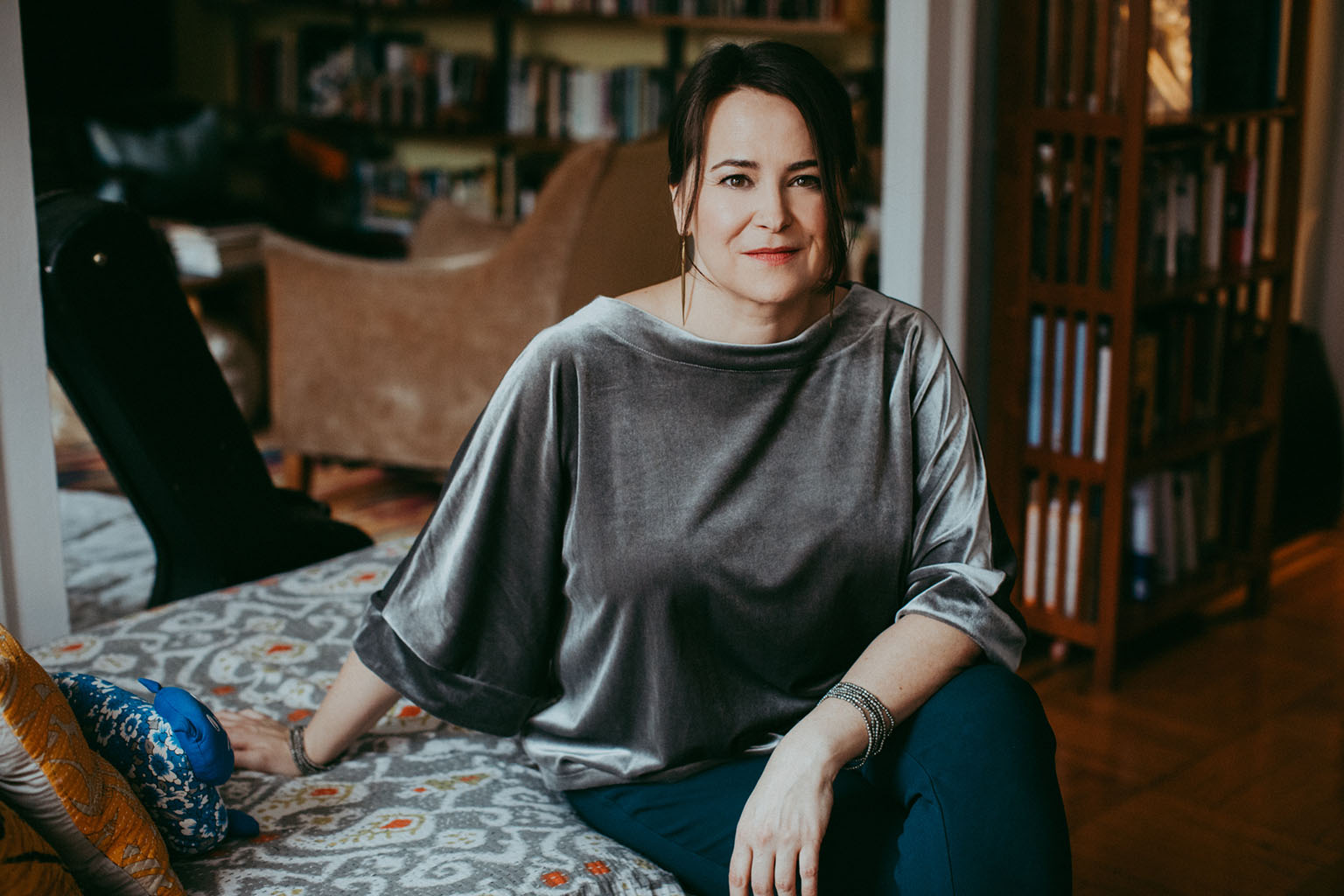Mother’s Day Cards for the Motherless
By Sara McGrath
Illustration by Sara McGrath
When I worked at a used bookstore in college, I spent hours in the cave, which is essentially a long, narrow, plywood closet. After books were priced, they were to be stacked and then shelved. I did the stacking, first sorting books by size and type and eventually learning how to make sturdy stacks of all types of books. I stacked so that each armful wouldn’t be too heavy or too awkward to carry, spines lined up neatly, taking care that the whole thing wouldn’t go Jenga on you.
Reading a book at the exact right time you need it is one of my favorite feelings. When I find one that’s ditched and dog-eared, even better. I like to see underlines and notes in the margins. I love an emphatic exclamation next to a paragraph. My mom always said that when you’re with a book, you’re never alone. Pencil marks affirm that. I think fondly of the person who stopped reading, put the book down to look for a pen, held the paperback flat to draw a blue line under a sentence that read like it was written for them. Maybe it’s the intimacy of hand writing that makes me feel less alone.
I was working the night shift in the cave when I found Motherless Daughters by Hope Edelman in a banker’s box full of cookbooks. More than any book I had found in the labyrinth of the store’s dusty corners, this one was actually written for me, because on January 12, 2005, my mom died. She was forty two, and I was fourteen.
I have underlined almost every line in this book. Unfortunately, the cover is really ugly. There’s a sepia-tone oil painting of a young girl in a blue dress looking super sad and abandoned or whatever, staring off into the distance. Personally, I think it’s the book cover equivalent of Papyrus font—as in, embarrassing.
“In February, I am charmed and endeared by displays of red and pink. Leading up to the second Sunday in May, I find the same colors offensive and gauche.”
My copy has always been kept out of sight. I hide it under my bed or in a drawer. Unlike my other books, displaying it does not signal how erudite and interesting I am.
Obviously, it says my mom is dead, but it also says something I have never been comfortable saying. Nothing says help me quite like a self-help book.
Telling someone my mom died is always complicated. Even fifteen years later, I tense up in a room when the conversation turns to parents, rehearsing my lines in case anyone asks about mine. When I say, “She’s from Italy,” I blur the apostrophe, making it unclear whether I am saying “She is from Italy” (alive), \ or “She was from Italy” (dead). This is usually enough information to move on. Telling someone my mom died always feels so…dramatic. I have always been concerned with the residual feelings my grief brings up in others. The died part seems to be what upsets people, and I can’t blame them—it really is a terrible word. In Motherless Daughters, \ Edelman describes the point she no longer cried when she talks about her mother, learning to respond to condolences with “a deferential smile and a non adversarial nod.”
“Researchers have found that children who lose a parent need two conditions to thrive: a stable surviving caregiver to meet their emotional and physical needs, and open and honest communication about the death and its impact on the family.”
I saw a grief counselor just once. We went all together as a family, now the three of us. My dad must have told the counselor how I was doing great, really holding it together, that he was very impressed. When she asked to talk to me in private, I repeated the same thing. My dad said that to everyone, so I did too. When the session was over, she opened a hall closet filled with stuffed animals. They had all been used—fur matted, eyes missing. The week before, two men came to our house in a van in the middle of the night to take my mother’s body to the crematorium. From where I stood in the hallway, I could see into her bedroom. (Since she had just died, was it hers anymore? Should I have written the bedroom? Death is a lot like copy editing). I watched these men, with my dad’s help, zip my mom’s body into a black body bag, until my dad saw me and slammed the door. Still, this closet of sad and probably haunted stuffed animals is the most morbid thing I have ever seen.
I picked out a snake made of felt, stuffed with what felt like cotton balls.
“Adults usually start their grief work immediately after a loss, but children tend to mourn in bits and pieces. They do it in the midst of the rest of life, dipping in and out of grief, with intense bouts of anger and sadness punctuating long periods of apparent disregard.”
Apparent Disregard would be a cool band name, but I digress. I was an angry teenager, prone to emotional outbursts and periods of isolation. My grief has manifested in circular, disorienting ways.
“Certain days or times of the day, week, or year can act as cyclical triggers, resurrecting grief responses. Holidays, crises, and sensory reminders can bring up the old feelings again too.”
In February, I am charmed and endeared by displays of red and pink. Leading up to the second Sunday in May, I find the same colors offensive and gauche. I cry every year on my birthday—like the person you wanted to call and wish you a happy birthday forgot, again.
“No matter how old we are, we yearn for a mother’s love throughout our lives, reaching for the security and comfort we believe only she can provide at times of illness, transition, or stress.”
My Mother’s Death is an indelible part of my life. But in the fifteen years since my mom died, I don’t have any advice for anyone. I fear the years to come, when friends’ parents start to die off and I won’t have any wisdom to impart or guidance to share. Nothing will ever make me feel completely better, to be completely honest. My anxieties, my fears, my dreams, my self-esteem, everything can be traced back to her. It absolutely sucks ass to be a motherless daughter. But the good news is there’s a book for that. And, like my mom used to say, when you’re with a book, you’re never alone.
Sara McGrath is a writer, copywriter, and illustrator living and working in Los Angeles.
Featured Book
Return to
RECENT INTERVIEWS









